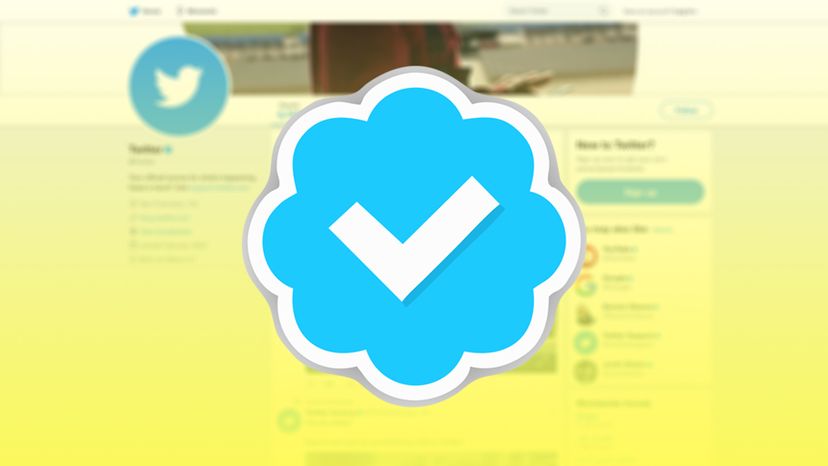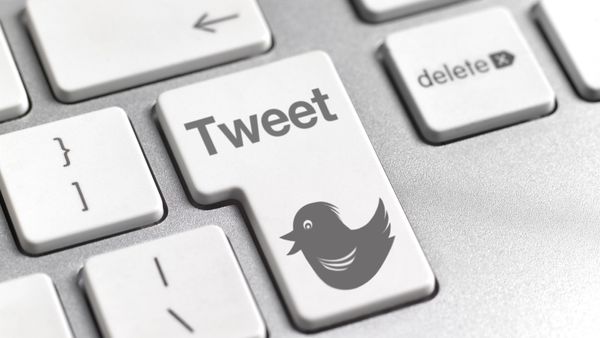
In June 2017, I had the absurd opportunity to fly to New York to see my fangirl crush, Brendon Urie of Panic! At the Disco, make his Broadway debut in "Kinky Boots." I wrote about the show and Urie's career evolution for San Francisco Weekly, and it got some pretty good traction on Twitter, thanks to a retweet from Urie's longtime bodyguard, Zack Hall. But the whole experience made me acutely aware of one of my major professional shortcomings: the lack of a little blue checkmark.
Even if you don't know exactly what it means, you've definitely seen it. It's the official-looking icon marking certain high-profile Twitter accounts. Beyoncé has one. The POTUS account has one. And if you start paying attention to the more well-known and highly followed Twitter users in your feed, you'll notice that a lot of major athletes, authors, musicians and politicians have that checkmark.
Advertisement
I initially thought these little stamps of verification were reserved only for the rich and famous. But then I started seeing more and more journalists, bloggers and vaguely defined "influencers" boasting them. And those people looked legit. It occurred to me that if I was going to be tweeting at busy editors, potential sources, and celebrity bodyguards, I needed to look like less of a fangirl/more of a pro.
According to Twitter's Help Center, that coveted little checkmark — otherwise known as the blue verified badge — "lets people know that an account of public interest is authentic." I knew an up-front signifier of my journalistic street cred could only help my case when tweeting at strangers for quotes or connections, but was I worthy? The Help Center says Twitter approves "account types maintained by users in music, acting, fashion, government, politics, religion, journalism, media, sports, business and other key interest areas." So I gave it a shot.
So did my go-to mental health source and longtime publishing colleague, Juli Fraga, a licensed psychologist and seasoned writer. Fraga has some impressive clips in major outlets like Time, The Washington Post,Vice and even The New York Times (perhaps you've heard of them?). Just like me, she's found Twitter to be an invaluable reporting resource and tool. "As a health journalist, I wanted to get 'verified' so that I could reach out to potential sources/editors," she says. "I thought that having a 'verified' account would give me that credibility. I've also heard that verified accounts open up more options in the Twitter landscape in terms of contacting people."
Around the same time I did, Fraga logged onto Twitter and began to go through the click-through steps. "The application process is easy," she says. "You fill out a form and list websites that showcase your work. Then you write a brief paragraph stating why you believe your account should be verified."
The process is astoundingly easy, but anyone attempting to achieve verification should be prepared for the possible downsides of success. According to Twitter, verified accounts can become targets for hacking or phishing campaigns, and the social media site strongly encourages hefty security precautions like enabling login verification (a mandatory second security check when you sign in to your account). Recently verified users are also auto-enrolled to require personal information like their email addresses and phone numbers in order to reset their passwords. Verified users are also cautioned that Twitter may remove the badge at any time if an account is changed in a way that modifies its original purpose. And once that check mark is revoked, users may not be eligible to get it back.
With those potential risks in mind, I got to work on my application, listing links to my articles on websites like O: The Oprah Magazine, Cosmopolitan, Marie Claire and Teen Vogue. Then I cited my reasons for requesting verification. Just like Fraga, I hoped the check mark would add credibility to my requests for quotes and interviews, and make sources more likely to trust me as a legitimate journalist. I pressed "submit," crossed my fingers and waited. A few weeks later, I received an early morning notification and suddenly, a cute little check mark made a home for itself on my profile.
Fraga, however, wasn't quite so lucky. She's been turned down four separate times. I reached out to representatives at Twitter for comment (yes, I tweeted at them), but didn't receive a response in time for publication. I'm grateful the process was so painless for me, but I wish I had more direction to offer my frustrated colleagues.
"Honestly, I'm not sure what else to do," Fraga says. "Many of my journalist friends have 'verified' accounts and we have similar bylines. It's a bit of a puzzle. I guess that I will just apply again in the future and hope that I pass the test."
Toronto-based journalist Renée Sylvestre-Williams encountered the same situation, but did eventually get verified, though she's not quite sure how she earned her check mark. "I applied twice, about six months apart," she says. When asked what she did to succeed, Sylvestre-Williams says she's not entirely sure. "I don't think it was anything in particular, but I put in my Muck Rack profile, a few major Canadian pubs, and explained that as a journalist, verification would add a layer of legitimacy. Seems to have worked," she says.
So, in the absence of input from Twitter itself, it seems the magic formula for verification is credibility, determination and a whole lot of luck.
Advertisement
